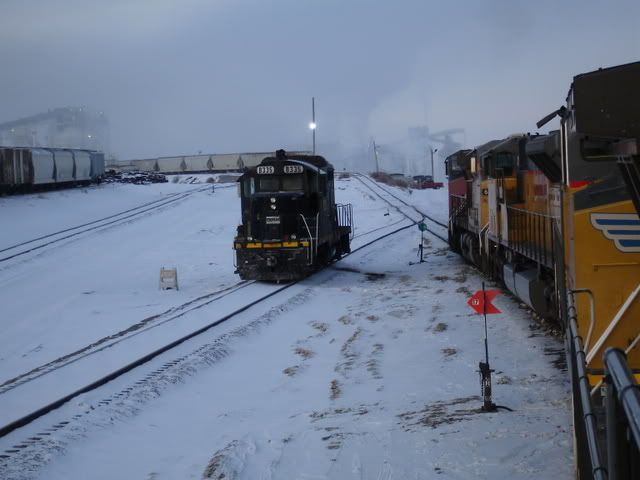Is "grade compensation" then a way to more accurately estimate the power required to pull an actual train over a steep but short maximum grade section? ...FB

.....Its good that your curious about this stuff, but i think your trying to fry your brain to figure out why they do it. I'll give you some first hand experiences here about moving cars and motors/trains in curves.
1. Moving a switch engine (SD40-2) on flat track, from the pit to the wye <---- (some of the tightest curves that i run on). It moves across the rails with out effort, once you notch off you can coast for quite awhile, you dont here the flanges screeching against the rails, straight track. Once the locomotive starts on wye, theres a alot of friction, flanges making a hell of alot of noise, and its nearly impossible to coast. The locomotive has to use alot more
power to over come the friction.
2. Climbing a hill with out comp. grade in the curves. So you have a train climbing a hill on a branch, with a straight track for 2 miles lets say at the bottom of the hill. Fifty car local leaving the plant doing 20MPH as they start up the hill the grade knocks there speed down to 15. As they approach the end of the straight part, looking at the curve, there speed is down to 10MPH. Once the locomotives start in the curve it becomes harder for the locomotives to pull the train due to, the friction between the flanges and the rail, the loss of adhesion because of the curve (trucks binding up? cant think of the right word to use there) and some other thing i cant think of right now, plus there fighting the grade, curve knocks the crap out of your train.
3. This is what you can really feel in curves when running in the winter. Lets make this one an empty auto rack, up and over a hill, good power, 100 cars, comp. grade or not doesnt matter, 50 in the curves, trains good for 70MPH. Blast up the hill with no problem, but you can tell the cars dont want to roll as good as they do when its warm. Up and over the other side of the hill and you start in the first curve in idle doing 50MPH, you can feel and hear the locomotives flanges doing there thing with the rail, the friction helps keep the train at 50. So the curve holds about 30 cars of your train, still coasting at 50 on another straight part as the headend starts into another curve, same thing as before, the friction of the motors and the headend help hold the train speed at or close to 50. As the headend comes out of the curve and you start on a good straight piece of track you can feel the headend start to roll out nice and easy just like you want. The rear end is out of the first curve and on the short straight part leading to the next curve, the slack is in, bunched against the cars that are in the curve fighting the friction, and like i said the slack on the head end is starting to stretch out, roll out because there.... not in a curve any more, and the cars that are left in the curve is kinda like pulling on an anchor. As the rear of the train is just about out of the curve you can start coming out on the gas to keep the train nice and stretched out, as you get ready to make the jump to 70. Thats using the friction to an engineers advantage.
Hope that helps you out with understanding trains moving threw curves, not my best writing, hope that helps.
I'll make #4 in a new post here.
